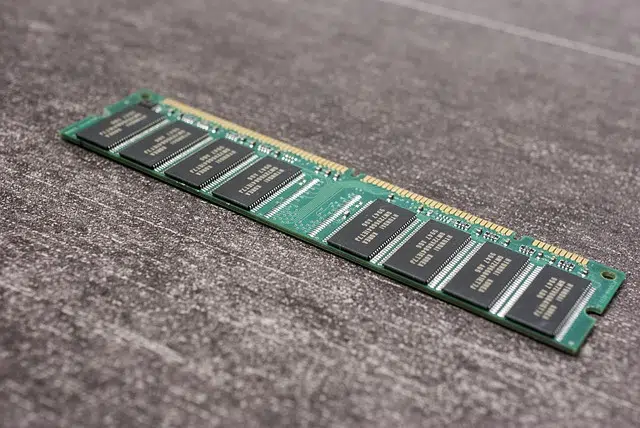
RAM is the acronym for Random Access Memory.
RAM is the acronym for the English concept of Random Access Memory . This is the memory that, in a computer equipment, is used by a processor to receive instructions and store the results.
It can be said that RAM is the working area of a computer 's software . The intermediate memory between the processor and RAM is known as cache , which provides quick access to the main memory (which is usually located on the hard drive).
RAM is the place where the orders that devices such as the processor must execute are loaded. Random access is linked to the fact that the waiting period for the execution of an instruction is the same in any position (it is not necessary to respect a certain order to reach the data).
RAM modules
RAM modules, known simply as RAM , are the hardware component that includes integrated circuits that are soldered to the printed circuit board. These modules are installed on the motherboard to act as the computer's RAM.
The main standards for these RAM modules are SIMM (which was deprecated; it had a data bus of up to 32 bits), DIMM (used by desktop computers, it has a 64-bit data bus) and SO-DIMM (used by notebooks, also known as laptops or portable computers).

RAM modules are part of a computer's hardware.
DDR memory
When purchasing a RAM memory module, it is very likely that we will see the acronym DDR accompanying the model we need. It is a technology that translates as "double transfer rate" and that offers the possibility of sending and receiving data through two channels simultaneously in each clock cycle.
At first, the computers that used this type of memory were those that had an AMD Athlon processor, contrary to computers with Pentium 4, which made exclusive use of less economical memories called RAMBUS . Once DDR technology proved successful in the market, especially considering that it outperformed its competition, Intel couldn't help but jump on the double transfer rate bandwagon . Its first DDR-compatible processor models were the Pentium 4 with a 64-bit FSB (Front Side Bus) and whose internal clock frequencies were between 200 and 400 MHz.
The nomenclature used for identification has the following format: PC-XXXX. It specifies the bandwidth, which is obtained by multiplying the frequency by 2, given the double rate principle, and then by 8 bytes, which is the amount of information that a module is capable of transferring in each clock cycle . . To better understand the calculation, let's take PC3200 as an example: starting from its 200MHz clock, we double it and multiply it by 8 bytes, which gives us 3200MB per second. It is important to remember that MHz refers to one million, so 200 is actually 200,000,000, and from there we take the "Mega" for the result.
Its evolution was the DDR2 memory modules, which allow 4 bits to be transferred per clock cycle, two on the way and two on the return. Then DDR3 appeared, which substantially improved speed and considerably increased the possible memory limit in each module, reaching 16GB. The revisions continued over the years.
AMR in medicine
On the other hand, an adverse reaction to a medication is known as ADR.
These types of reactions include those responses that are unintentional and that are harmful to the body, as long as the recommended dose is applied.
